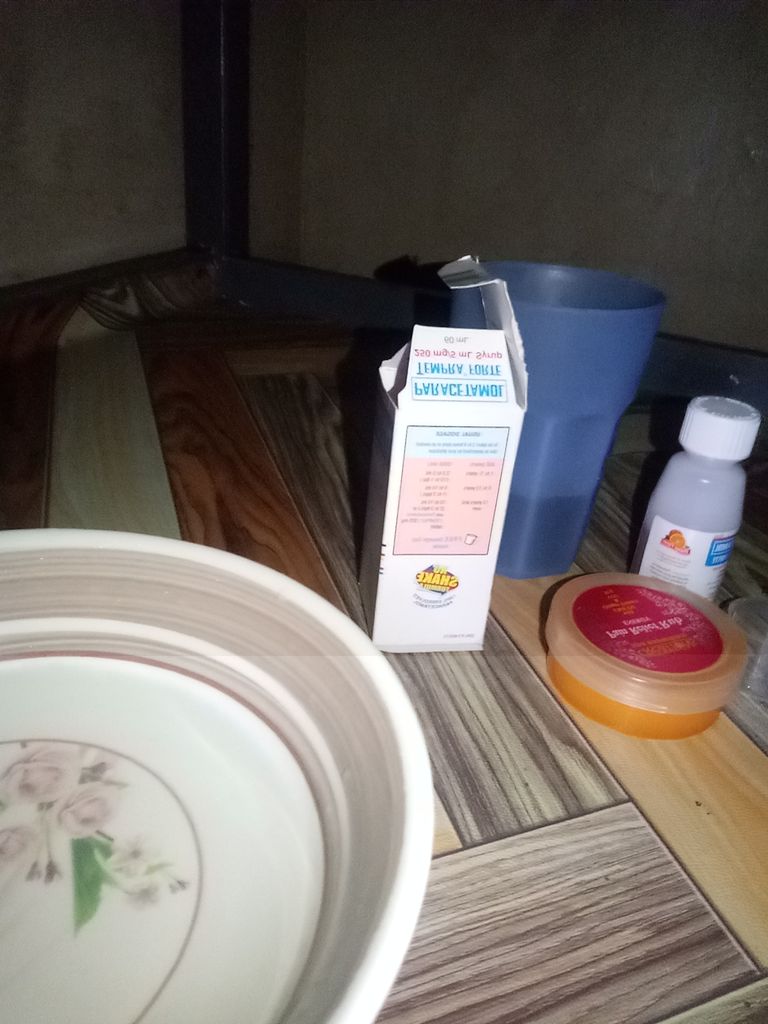My superman had a fever since yesterday morning!


*A fever is when your body temperature is higher than your normal average temp. Most providers say a fever is either 100.0 F (37.8 C) or 100.4 F (38 C). When you have a fever, it’s your body’s normal response to fighting an infection or illness. Fevers usually aren’t a serious concern. They typically go away when the infection passes.
•What is a fever?
A fever is when your body temperature rises higher than normal. A fever itself isn’t an illness. Rather, it’s a symptom of a wide range of health conditions. When your body temperature rises a few degrees above normal, it can be a sign that your immune system has been activated, often to fight an infection. It can also be a side effect of some medications and vaccinations.
•What is considered a fever?
Common knowledge states that a “normal” body temperature is 98.6 degrees Fahrenheit (37 degrees Celsius). But your baseline body temperature may vary by a degree or more. It also fluctuates. It’s typically lower in the morning and higher in the evening. It’s higher during certain points of your menstrual cycle and when you’re exercising.
Infants and young children normally have slightly higher body temperatures than older children and adults. So infants and younger children have slightly higher fever temperatures.
There are no strict guidelines for what temperature is a fever, because body temperature varies by person, time of day and method of measurement. But healthcare providers most often say a fever temperature is 100.4 degrees F (38 degrees C) when measured orally (by mouth).
Rectal and ear thermometers typically measure temperatures at about 1.0 degrees F (0.6 degrees C) higher than oral thermometers. Skin thermometers (such as forehead thermometers) typically measure temperatures at about 1.0 degrees F (0.6 degrees C) lower than oral thermometers.
•What is a low-grade fever?
A low-grade fever means a body temperature slightly above normal. This type of fever can be a sign your immune system has been mildly activated. There’s no standard low-grade fever range. But many healthcare providers consider a body temperature between 99.5 degrees F (37.5 degrees C) and 100.3 degrees F (38.3 degrees C) to be a low-grade fever.
•What are fever symptoms?
In addition to an elevated temperature, you may experience the following symptoms:
1.Chills, feeling cold, shivering and shaking.
2.Body aches and headaches.
3.Fatigue (tiredness).
4.On and off or constant sweating.
5.Flushed complexion or hot skin.
6.Faster heart beats.
•A runny nose is having fluid run out of the nose. The fluid can range from thin and clear to thick and yellow-green. The fluid might drip or run out of the nose, down the back of the throat, or both. If it runs down the back of the throat, it's called postnasal drip.
*A runny nose is often called rhinorrhea or rhinitis. But the terms are different. Rhinorrhea involves a thin, mostly clear fluid running from the nose. Rhinitis involves irritation and swelling inside the nose.

*I waking him up at 1:00 to drink his medicine,I rub his whole body a wet towel because his very hot,his temperature was very high..i think it takes 1 and ½ hour before his fever was back into normal average of temperature! And then he sleep forward after that!
*I want to take a nap also but my insomnia have been attacked! I can't sleep,even if I feel sleepy and dizziness through to had a sleepless night the other day!
•Paracetamol:
Paracetamol is a commonly used medicine that can help treat pain and reduce a high temperature (fever).
•It's typically used to relieve mild or moderate pain, such as headaches, toothache or sprains, and reduce fevers caused by illnesses such as colds and flu.
•Paracetamol is often recommended as one of the first treatments for pain, as it's safe for most people to take and side effects are rare.
•Types of paracetamol:
You can buy most types of paracetamol from supermarkets or pharmacies. Some types are only available on prescription.
Paracetamol is available as:
1.tablets or caplets
2.capsules
3.liquid – usually for children
4.soluble tablets (tablets that dissolve in water to make a drink)
5.suppositories (capsules inserted into the back passage)
6.an injection given into a vein – normally only used in hospital
*In some products, such as cold and flu remedies or certain combination painkillers, paracetamol is combined with other ingredients.
It may be sold under the name paracetamol, or under various brand names (which may also contain other ingredients).
*Who can take paracetamol?
Most people can take paracetamol safely, including:
1.pregnant women
2.breastfeeding women
3.children over 2 months of age – lower doses are recommended for young children (see How to take paracetamol below)
*If you're not sure whether you can take paracetamol, check the leaflet that comes with it or ask your pharmacist or doctor for advice.
*Always get advice before taking paracetamol if you:
1.have liver or kidney problems
2.have problems with alcohol, such as long-term alcohol misuse.
3.are very underweight
4.are taking other medications
•Don't take paracetamol if you've had an allergic reaction to it in the past.
*How to take paracetamol?
Make sure you take paracetamol as directed on the label or leaflet, or as instructed by a health professional.
*How much you can take depends on your age, your weight, the type of paracetamol you're taking and how strong it is. For example:
•Adults can usually take 1 or 2 tablets (500mg) every 4-6 hours, but shouldn't take more than 4g (8 x 500mg tablets) in the space of 24 hours.
•Children under 16 need to take a lower dose, depending on their age or weight – check the packet or leaflet, or ask a pharmacist or doctor for advice. For very young children, paracetamol liquid is given using a measuring spoon or an oral syringe.
•Paracetamol should start to work within an hour and the effect usually lasts several hours. Don't take more than the recommended dose if it isn't relieving your symptoms.
*Have A Wonderful Sunday To All Of Us!🤗😍
THANK YOU FOR ALWAYS SUPPORTING MY BLOGS!💖🥰